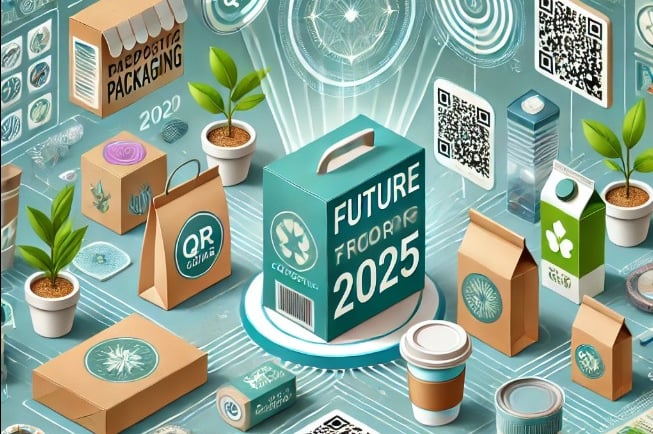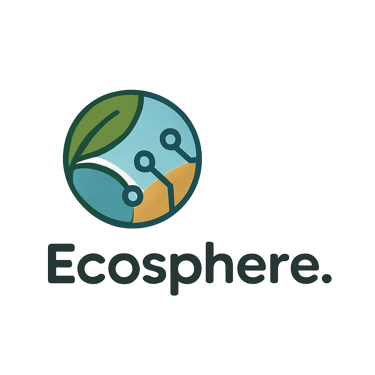SUSTAINABILITY + ECO-FRIENDLY TECHONOLOGY & HIGH QUALITY PRODUCTS
The Rise of “Green Tech You Actually Use”
9/30/20254 min read


Sustainability used to live mostly in the lab, in pilot programs, or as an added “eco line” in brands. But increasingly, technologies that actually reduce environmental impact are reaching the consumer level. These are no longer just fancy experiments — they’re entering homes, wardrobes, devices, and daily routines. The challenge now is scaling, affordability, and ensuring that the “green” claims are meaningful.
Below are some of the most promising and emerging sustainable tech trends consumers should watch (or start adopting).
1. Energy Efficiency & Smart Home Tech
Making devices smarter and more energy-conscious is one of the clearest levers for reducing emissions at scale.
Smart thermostats, appliances & power management: Tools that dynamically optimize energy usage (for heating, cooling, ventilation, refrigeration) based on occupancy, weather forecasts, and energy pricing are becoming more precise and accessible.
Home batteries + mini grid integration: As home solar adoption grows, better home energy storage (increasingly affordable) enables households to shift consumption to cleaner energy windows.
IoT sensors and demand response: More homes will include sensors for lighting, temperature, humidity, air quality, and more, all connected to systems that optimize resource consumption.
Cooling & climate control innovations: New materials, phase-change materials, and passive-cooling designs are creeping into building envelopes to reduce AC loads. TechInformed projects this as a major trend in “sustainable tech in 2025.” Tech Informed
Taken together, these advances can shrink the majority of your home’s emissions without you having to think too hard about it.
2. Textile & Clothing Tech: Wearables, Smart Fabrics & Circularity
Fashion and textiles are among the resource-intensive industries. Technology is beginning to shift them toward greater sustainability.
Self-powered smart garments / textile energy harvesting: Research is advancing in embedding triboelectric nanogenerators (TENGs) into fabrics. For example, texTENG offers a path to wearable textile-based generators that convert motion (like walking) into small amounts of electricity. arXiv
Advanced sorting & recycling: One barrier to textile recycling is the difficulty of sorting mixed fibers. Autonomous pipelines using robotics, spectral imaging, and AI are showing promise in improving sorting accuracy, which helps scale textile-to-textile recycling. arXiv
Digital fashion & AR/VR wearables: Garments that exist purely in the digital realm—usable in metaverse, virtual try-on, or social media avatars—allow style without physical production. This reduces waste and overproduction. Wikipedia
Biofabricated materials & living textiles: Biodesign is a field where living organisms (fungi, bacteria, algae) are used to grow materials (mycelium leather, bacterial cellulose, algae yarns). These bio-materials often require fewer resources and can be more biodegradable. Wikipedia
These shifts may still feel experimental, but over the next 5–10 years they could redefine what “clothing” means.
3. Circular & Remanufacturing Tech
Making things last longer, refurbishing, and closing loops is rapidly moving from principle to product.
Circular remanufacturing of electronics: Some companies now take used laptops/devices, disassemble and test them, and restore them to high quality—often meeting or exceeding new device standards. This helps extend the digital life cycle and reduce e-waste. Wikipedia
Textile-to-textile recycling efforts: A number of players (Circulose, Re&Up, etc.) are pushing to make real closed-loop fiber recycling economically viable. While challenges remain, regulatory momentum (especially in regions like the EU) is helping. Vogue Business
“Product passports” & traceability tools: Using blockchain or other immutable record systems, brands are beginning to embed trace histories in products (materials, manufacturing, carbon footprint). This makes it easier for consumers to know what they’re buying, and for brands to reclaim or repurpose items later.
On-demand / micro-factories: Instead of mass producing and shipping globally, more localized, automated factories produce close to consumer demand. This reduces overproduction and transportation emissions.
4. AI, Predictive Analytics & Smart Design
Artificial Intelligence isn’t just hype; when wielded smartly, it can reduce waste and guide better choices.
Demand forecasting & inventory optimization: Retailers and apparel brands use AI to better predict what will sell, reducing overstock and discounting.
Sustainability-driven design tools: AI tools can suggest low-waste patterns, alternative eco materials, or even optimize cuts to use fabric more efficiently.
Consumer apps & behavior nudges: Apps that recommend more sustainable product options (based on carbon, recyclability, durability) can influence purchase behavior.
Caution: AI’s hidden footprint: It’s important to remember that AI models are often energy-intensive, relying on data centers and compute. The fashion sector, for example, is debating how to balance the gains AI brings against its environmental cost. Vogue Business
As these tools mature, they’re likely to embed sustainability in design workflows, not just marketing.
5. Nanomaterials & Green Nanotechnology
Nanotech is the behind-the-scenes enabler for efficiency, durability, and resource savings.
Nano‐enhanced coatings & finishes: Surfaces that repel water, self-clean, or resist stains can reduce washing frequency and chemical use.
Nanostructured solar / energy materials: For example, integrating nanomaterials in flexible solar panels or wearable photovoltaics that harvest ambient light.
Green nanotech for better materials: Engineering materials at nanoscale to improve performance with less resource input is a part of “green nanotechnology.” Wikipedia
Because the scale is small, the material use is minimal, but the performance gains can be significant.
6. Consumer-Level Environmental Monitoring & Feedback
One of the most powerful technologies is transparency itself—giving people real feedback about their impact.
Personal carbon tracking & dashboards: Apps or device ecosystems that monitor your energy use, travel, food purchases, and more to give you a “carbon budget” or tips to improve.
Smart packaging & embedded sensors: Packaging that can detect spoilage, moisture, or contamination—in food, cosmetics, etc.—reducing waste.
Food / agriculture traceability: QR codes, blockchain, or sensor data that lets you trace where food came from, how it traveled, and how fresh it is.
Air / water / pollution sensors for households: Affordable sensors help you monitor local air quality, indoor VOCs, water quality, etc., enabling you to respond smarter (e.g. ventilate, purify, adjust habits).
What’s Holding It Back — And What You Can Do Today
Barriers & Challenges:
Cost & scalability: Many of these technologies are still expensive or limited by scale.
Consumer trust & greenwashing: Claims must be verifiable—otherwise they undermine the idea of “sustainable tech.”
Energy / materials footprint of tech itself: Embedded tech, batteries, and manufacturing still carry environmental burdens.
Infrastructure & maintenance: Recycling systems, repair networks, and smart grid infrastructure aren’t ubiquitous yet.
Steps You Can Take Right Now (as a consumer):
Favor products with clear transparency: Look for traceability, product passports, or verified claims.
Adopt energy-smart home devices: Smart thermostats, efficient appliances, and home battery systems.
Support circular & remanufactured products: Choose refurbished electronics or upcycled fashion where practical.
Embrace digital-first or virtual alternatives: Use virtual try-on, digital fashion, or limit impulsive physical purchases.
Advocate & educate: Ask brands about the tech behind their product, push for more transparency and accountability.
Final Thoughts
The future of sustainable tech is not in grand visions alone but in everyday tools—your home, your clothes, your data—becoming smarter, leaner, more circular. As these technologies mature, they have the potential not only to reduce individual footprints but to transform entire supply chains and systems.
